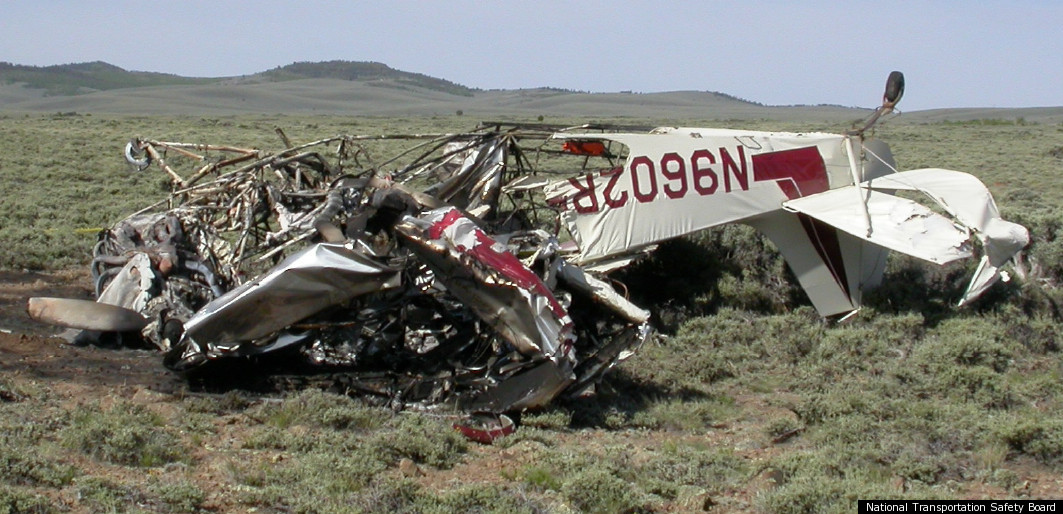Many of us are struggling financially, even while we watch Congress wrangle over deficit levels, tax cuts or increases and political ideology. Much is wrong with our economy, yet little-known, wasteful government spending continues unchecked. One such example has been with us since 1915 : the United States Department of Agriculture's (USDA) wildlife-killing program, called Wildlife Services. Not only does this program persist, but its latest figures show that it is spending and killing more than ever.
The program title -- Wildlife Services -- is sadly ironic, but its other historic names have been more to the point: "Animal Damage Control" and "Predatory Animal and Rodent Control." Under the aegis of Wildlife Services, USDA agents spend tens of millions of our tax dollars to fund the butchery of coyotes, cougars and other wildlife -- from birds to beavers to grizzly bears -- as part of a secretive, special-interest agenda. Providing questionable benefits to the agribusiness (ranching) and gun-toting lobbyists (including the NRA), Wildlife Services has been a major force in eliminating wolves, grizzly bears, prairie dogs and other wildlife in the continental United States.
In just-released 2010 figures, the USDA stated it killed over 5 million animals and spent over $126 million. These figures represent a death toll increase of 22 percent and a 4.5-percent expenditure increase from 2009. The USDA attributes most of its mortality to starlings, and in fact, the starling count went up by 99 percent from last year, while the number of native carnivores decreased slightly, by 1,722 individuals. Poisoning starlings is relatively cheap (and their death count is speculative in any year), but aerial gunning of coyotes is expensive. The public has shouldered a price increase, but with what outcome? One could argue that the USDA's efficiencies in their war on the public's wildlife have declined. While that decrease might be considered positive, the unnecessary and wanton killing continues at an enormous price to life and in money.
Other mortality figures for 2010 include:
The wanton destruction of America's wildlife is not only contrary to public interest, but it has also included some agents revered for their activities. One of its earliest and most famous agents was author and Boy Scout founder Ernest Thompson Seton, who battled Mexican wolves, including the mythic "King of the Currumpaw."
Furthermore, Wildlife Services is ramping up its militaristic methodologies against our remaining wildlife populations. Its array of weaponry is truly stunning. Its 2010 figures show the following examples:
- Aerial Gunning: 42,431 animals were killed from helicopters and airplanes, including 31,998 coyotes, 95 bobcats, 160 foxes, 168 gray wolves and 15 bighorn sheep. (The human toll from this dangerous practice has been 10 fatalities since the 1970s.)

Let's highlight one poison: sodium cyanide. The USDA uses it in a pellet form that it is placed in a booby trap called an "M-44." A smelly lure entices a victim to the M-44. When the tip is tugged, a piston mechanism ejects the cyanide pellet into the animal's mouth, where the pellet becomes a deadly gas, asphyxiating the victim in less than two minutes. USDA-Wildlife Services deploys 30,000 M-44s in America each year. They dot our forests, prairies and deserts. While designed to kill coyotes, M-44s harm people, pets and so-called "non-target" wildlife. In 2010 Wildlife Services counted 14,155 animal victims from M-44s, including 13,000 coyotes, 91 dogs, 505 gray foxes, 384 red foxes, 21 swift foxes and 12 kit foxes. Have you ever seen a kit fox? Join the club. Endangered, rare, innocent animals and pets are all victims.
Myriad problems plague Wildlife Services. For starters, the agents kill a lot of wildlife. These deaths absolutely cause harm to the environment. The presence of beavers and wolves in the landscape, for example, greatly enrich biological diversity. They are keystone species that are killed at alarming rates by Wildlife Services.
Next, Wildlife Services' brutal warfare comes freighted with shocking welfare concerns. Animals are left in leg hold traps or are asphyxiated by neck snares. Poisons like Compound 1080 and zinc phosphide can take hours or even days to take effect -- a prolonged, agonizing death.
Finally, the USDA's Wildlife Services program is simply unjustified economically. It's a taxpayer burden that doesn't even benefit those who are supposed to receive most of its resources: those in agribusiness, especially the free-range ranchers. Many times more livestock die from weather and birthing problems than from predations. In fact, less than 1 percent of the entire U.S. cattle and sheep inventory dies from native carnivores (such as coyotes and wolves) and domestic dogs.
Just as biologists are shouting alarm cries about the need to protect top carnivores in an intact ecosystem, Wildlife Services is helping to wipe the biggest of these species from the planet, and it uses faulty figures to bolster its rogue claims.
Ironically, fiscal conservatives in Congress recently showed that they care little about actually saving the American taxpayer from looming debt when they overwhelmingly and decidedly refused to cut the awful funds that go toward killing America's top native carnivores, such as wolves, bears and mountain lions.
The USDA-Wildlife Services killed over 5 million of the public's wildlife in 2010 and spent $126,495,487, a 4.5-percent increase from 2009. This costly program was inflicted upon us even while we are in the midst of financial crisis. Worse, much of this killing is unnecessary, inhumane and causing ecological catastrophe.